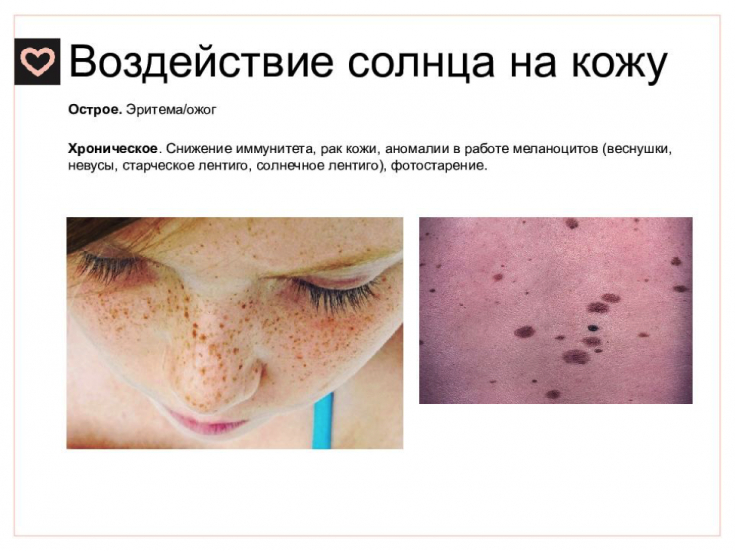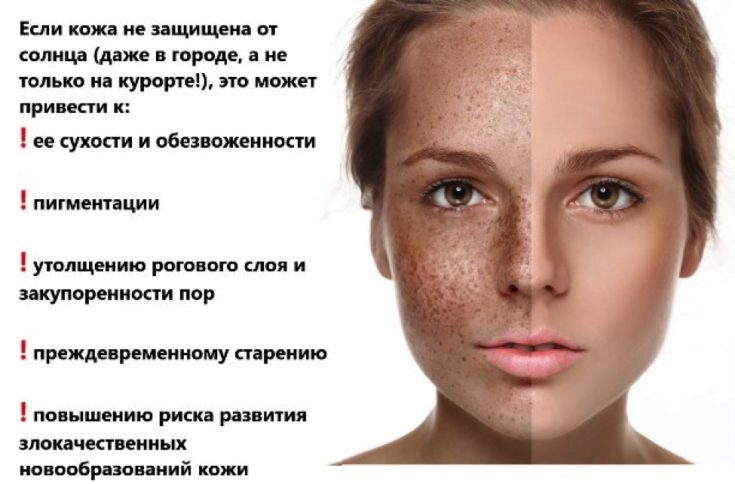Age-related changes in facial skin are characterized by significant changes in histoarchitectonics, which are manifested by impaired keratinization processes (epidermocytic dysfunction), uneven thickening of the basement membrane of the epidermis, signs of dermal fibrosis with a mismatch in the direction of collagen fibers relative to the longitudinal axis of fibroblasts (fibroblastic dysfunction) .
Find out in the article on estet-portal.com what changes in the structure and functioning of cells are observed with photodamage of skin aging.
- Layered changes in facial skin aging
- changes in the functional activity of cells during photodamage and skin aging
- irradiation that leads to irreversible processes and skin aging
Facial skin aging: layer-by-layer changes
Degeneration of elastic fibers, sclerotic changes in the vessels of the microvasculature, a decrease in the number of nerve fibers and their endings, dystrophic changes in endotheliocytes ˗ these are all consequences of the skin aging process.
Follow us on Instagram!
Study of facial skin ultrastructure in elderly people revealed the following features of its structure: thinning of the epidermis, disruption of keratinization processes, changes in skin cell organelles as it ages.
When examining the skin of older people, morphological signs of apoptosis of basal epidermocytes, which are the "source" of new cells.
Regarding the vessels, the greatest structural changes are observed in the capillaries of the papillary dermis. Individual features of changes in microvessels provide features of the manifestations of aging of the skin of the face. Changes in the connective tissue base of the skin are characterized by signs of fibrosis.
Read also: Care for the infraorbital zone after cosmetic procedures: the possibilities of peptide patches
In the dermis, an increase in the number of microfibrils of collagen fibers, changes in the fibrillar and energy structures of fibroblasts can be detected. All of these changes can be considered certain and characteristic signs of facial skin aging.
Changes in the functional activity of cells during photodamage and skin aging
Basal epidermocytes, endotheliocytes, pericytes and muscles of the skin exhibit the activity of Ca 2+ -ATPase and Mg 2+ -ATPase enzymes on plasma membranes, the activity of which decreases with age. Senile sagging of the skin of the face is characterized by a violation of energy processes, which is manifested by a decrease in the activity of these enzymes on the membrane structures of the epidermis and dermis.

When examining actinic lesions, the following changes were observed: hyperkeratosis, acanthosis, and dyskeratosis. Skin microvessels expanded, which led to thinning of their walls. This phenomenon explains the occurrence of a large number of telangiectasias. There were also signs of capillary basement membrane fibrosis, thrombotic lesions.
Follow our updates on Facebook!
In the pathogenesis of skin aging in photodamage, a significant place is occupied by disturbance of physiological regeneration processes. Under experimental conditions, 24 hours after irradiation, the process of mitosis, which ensures the process of skin renewal, is not detected in skin cells. The cessation of mitotic activity is the result of profound disorders of metabolic processes in cells.
Read also: Elimination of rosacea in 4 procedures. Complete restoration of the skin.
Changes in the intracellular distribution of enzymes due to disorganization of membrane molecules and alteration of cytoplasmic organelles are of decisive importance in the mechanisms of skin aging in photodamage. Based on the foregoing, changes in the epidermis and dermis that succumbed to chronic photodamage represent a complete, irreversible process that occurred in a living cell due to a violation of intracellular metabolic mechanisms and is closely related to changes in cell ultrastructure.
Irradiation leading to irreversible processes and skin aging
Electron microscopic examination of the skin of irradiated animals made it possible to establish that under the influence of UV radiation at a dose of 1000 kJ m 2, pronounced changes in the mitochondria of basal epidermocytes and fibroblasts were observed. The cytoplasm of cells becomes optically dense and decreases in volume. Cells turn into electronically opaque structureless masses. Redistribution of chromatin of nuclei and ribosomes in the cytoplasm plays an important role in metabolic disorders in cells, which leads to their death.

It can be concluded that the destruction of mitochondria led to a decrease in the amount of energy that provides metabolic processes, which significantly disrupts the regulation of energy metabolism. Changes in the nuclei of basal epidermocytes, condensation of chromatin granules under the membrane, vacuolization of the cytoplasm, disintegration of the basement membrane of capillaries lead to irreversible changes in the cell and further accelerate the aging process of the skin.
Read also: How to effectively rejuvenate the neck and décolleté
Thus, ultramicroscopic examinations allow to establish changes in skin ultrastructure during photodamage and show that the use of sunscreens is one of the main methods of slowing down skin aging.
The most up-to-date information in the world of aesthetic medicine on our YouTube-channel:







Add a comment